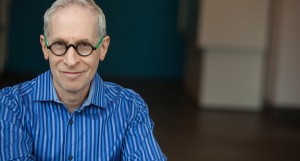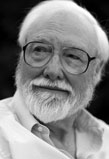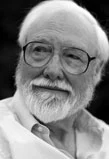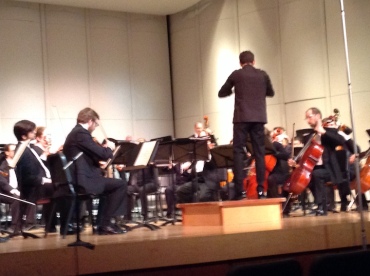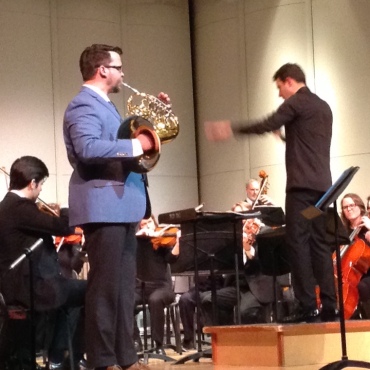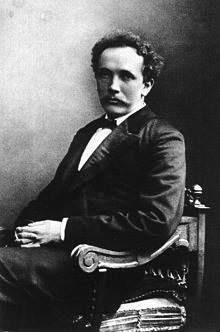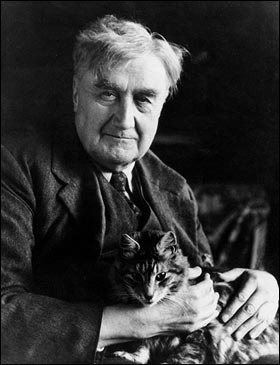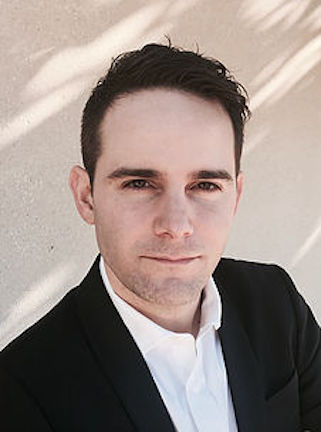The Well-Tempered Ear
Classical music: The Oakwood Chamber Players perform a mini-opera version of “A Christmas Carol” this Saturday night and Sunday afternoon
1 Comment
PLEASE HELP THE EAR. IF YOU LIKE A CERTAIN BLOG POST, SPREAD THE WORD. FORWARD A LINK TO IT OR, SHARE IT or TAG IT (not just “Like” it) ON FACEBOOK. Performers can use the extra exposure to draw potential audience members to an event. And you might even attract new readers and subscribers to the blog.
By Jacob Stockinger
Over several deuces, the Oakwood Chamber Players have built a solid reputation for their top-notch performances of unusual and neglected repertoire.
So it comes as no surprise that the group will offer one of the newer, more unusual and promising takes on the holiday classic, “A Christmas Carol.”
Twice this weekend, the Madison-based, widely experienced musical theater actor and baritone Robert A. Goderich reprises his tour-de-force performance, last done in 2016, of Charles Dickens’ characters for the Oakwood Chamber Players’ presentation of the mini-opera “The Passion of Scrooge” by New York composer Jon Deak.
A dozen musicians, including ensemble members with special guest artists, provide the platform for Goderich’s characterizations on this coming Saturday night, Dec. 7, at 7 p.m., and Sunday afternoon, Dec. 8, at 2 p.m.
The concerts take place at Oakwood Village University Woods Auditorium at 6209 Mineral Point Road, on Madison’s far west side near West Towne Mall.
Tickets are available at the door and are $25 for adults, $20 for seniors, and $5 for students. Go to https://www.oakwoodchamberplayers.com for more information.
Members of the ensemble for this program are: Marilyn Chohaney (flute), Nancy Mackenzie (clarinet), Anne Aley (horn), Elspeth Stalter Clouse (violin) and Maggie Darby Townsend (cello), and guest musicians Hillary Hempel (violin), Emma Cifrino (viola), Brad Townsend (bass), Mike Koszewski (percussion), and Margaret Mackenzie (harp).
Over the past two decades, New York Philharmonic bassist and composer Jon Deak (below) has created a variety of “concert dramas” that tell stories through words and sound.
Performed annually at the Smithsonian, this two-act musical setting re-imagines Ebenezer Scrooge’s struggle to transform his past, present and future from a life of avarice to warmth and humanity.
As singer and narrator, Goderich, who plays all the parts, is the focal point; but the composer has given the instrumentalists an integral part in the story line, too. Conductor Kyle Knox (below) leads the ensemble through many facets of this humorous work filled with dramatic effects.
Deak requires the musicians to be nimble performers, juggling melodic lines while interjecting entertaining sounds into Dickens’ traditional tale. You can hear the opening introduction by the Storyteller in the YouTube video at the bottom.
One of the score’s important aspects is the varied use of percussion, which provides a broad range of instruments and sound effects. Audiences can enjoy both the aural and visual artistry of chains rattling, doors creaking and footsteps echoing in this holiday classic.
Additionally, the Oakwood Chamber Players will perform a suite of British reels and carols, including songs mentioned in the text of Dickens’ original story.
For example, when the Ghost of Christmas Past reminds Scrooge of his first employer Fezziwig, a fiddler plays the tune “Sir Roger De Coverley.” This Scottish-English country dance, arranged by composer Frank Bridge in 1922, is one of the tunes providing an engaging introduction to “The Passion of Scrooge.”
Tags: #AChristmasCarol, #AnneAley, #BaritoneSinger, #BlogPost, #BlogPosting, #ChamberMusic, #ChamberOpera, #CharlesDickens, #CountryDance, #DoubleBass, #DoubleBassist, #EbenezerScrooge, #FacebookPost, #FacebookPosting, #FocalPoint, #FrankBridge, #GhostofChristmasPast, #GuestArtist, #HilaryHahn'sViolincase, #HolidayClassic, #HomeWebpage, #InstrumentalMusic, #InstrumentalPlayer, #JonDeak, #KyleKnox, #MargaretMackenzie, #MarilynChohaney, #MelodicLine, #MikeKoszewski, #MusicalTheater, #NeglectedMusic, #NeglectedRepertoire, #NewMusic, #NewYorkCity, #NewYorkPhilharmonic, #OakwoodChamberPlayers, #OakwoodVillage, #OperaMusic, #RobertGoderich, #SeniorCitizen, #SmithsonianInstitution, #SoundEffects, #ThePassionofScrooge, #ThePasson ofScrooge, #UniversityWoods, #VocalMusic, #WestSide, #WestTowneMall, #YouTubevideo, A Christmas Carol, acclaim, Actor, adult, Anne Aley, annual, artistry, Arts, audience, aural, avarice, baritone, bass, bassist, blog, British, broad, Carol, Cello, chains, Chamber music, chamber opera, character, Charles Dickens, Christmas, clarinet, clarinetist, classic, Classical music, composer, Concert, conductor, country, country dance, creaking, dance, decades, double bass, double bassist, drama, dramatic, echo, echoing, employer, English, enjoy, ensemble, entertain, entertaining, Facebook, fiddler, flute, flutist, focal point, footsteps, forward, Frank Bridge, future, ghost, Ghost of Christmas Past, guest artist, harp, harpist, Holiday, holiday classic, Horn, hornist, humanity, humorous, instrumental music, instrumental player, instrumentalist, Jacob Stockinger, Jon Deak, juggle, Kyle Knox, life, like, link, Madison, Margaret Mackenzie, Marilyn Chohaney, melodic, melody, Mike Koszewski, Music, Musical theater, musicians, narrator, neglected, new, New Music, New York City, New York Philharmonic, nimble, Oakwood Chamber Players, Oakwood Village, online, opera, opera music, past, percussion, percussionist, performer, player, post, posting, present, presentation, promising, range, reels, repertoire, repetoire, reputation, Robert Goderich, Scottish, Scrooge, senior, senior citizen, setting, share, singer, Smithsonian, Smithsonian Institution, solid, song, songs, Sound, sound effects, standard, story, struggle, Student, Suite, surprise, tag, tale, text, The Passion of Scrooge, ticket, traditional, transform, tune, tunes, United States, University of Wisconsin-Madison School of Music, University of Wisconsin–Madison, University Woods, unusual, Viola, Violin, violinist, violist, visual, vocal music, Website, weekend, west side, West Towne Mall, Wisconsin, words, YouTube
Classical music: University Opera succeeded brilliantly by setting Britten’s “A Midsummer Night’s Dream” in the 1960s at Andy Warhol’s The Factory
2 Comments
PLEASE HELP THE EAR. IF YOU LIKE A CERTAIN BLOG POST, SPREAD THE WORD. FORWARD A LINK TO IT OR, SHARE IT or TAG IT (not just “Like” it) ON FACEBOOK. Performers can use the extra exposure to draw potential audience members to an event. And you might even attract new readers and subscribers to the blog.
By Jacob Stockinger
Larry Wells — the Opera Guy for this blog – took in two performances last weekend of the University Opera’s production of Benjamin Britten’s “A Midsummer Night’s Dream,” which played to three sold-out houses at Music Hall. He filed this review. Performance photos are by Benjamin Hopkins and Michael Anderson.
By Larry Wells
The University Opera’s production of Benjamin Britten’s “A Midsummer Night’s Dream” was set in Andy Warhol’s Factory of the 1960s with countertenor Thomas Alaan (below) as a Warhol-like Oberon presiding over the antics.
The opera by Britten (below) follows Shakespeare’s play fairly closely. The magical transformations and herbs of the original were translated to a hallucinogen-filled milieu of go-go dancing fairies, master-slave relationships and same-sex liaisons.
And for me it worked. That is to say, this production contained the same strangeness and wonder as the traditional productions I have seen. The play itself is very strange and wonderful.
Alaan is a fine singer and played a manipulative and somewhat slimy Warhol/Oberon whose flat affect seemed to be reflected in the relative lack of expressivity in the voice. Pitted against Oberon were Amanda Lauricella and Kelsey Wang alternating as Tytania.
Although the program stated that the portrayal of Tytania was loosely based on Edie Sedgwick in this production, without the platinum hair I missed the references. Both portrayals were much more assertive than Edie ever was, and both singers’ ardent coloratura voices tended to overshadow Oberon’s, which may have been intentional. Wang (below, far right) was an intense actress who put sparks into her portrayal, while Lauricella really has a superb voice.
(Below, from left, are Michael Kelley as Puck; Thomas Alaan as Oberon; Tanner Zocher as a young man; and Kelsey Wang as Tytania.)
The four lovers (below left) seemed to be employees at The Factory. Tenor Benjamin Liupaogo portrayed Lysander. The vocal part has an uncomfortable upper range, but Liupaogo’s singing in the second act particularly was up to the challenge.
His rival Demetrius was portrayed by baritone Kevin Green. Their contending affections for Hermia and Demetrius’ initial scorn for Helena were oddly lacking in ardor.
Hermia was double cast with Julia Urbank, a promising soprano, and Chloe Agostino, who was also a very good singer. Poor Helena, first ignored and then pursued by both men, was also double cast with a terrific Rachel Love and an equally gifted Jing Liu.
(The four lovers, below from left, were: Benjamin Liupaogo as Lysander; Chloe Agostino as Hermia; Jing Liu as Helena;, Kevin Green as Demetrius; and Paul Rowe as Theseus with Lindsey Meekhof as Hippolyte.)
As I have noted before, the female singers in the opera program often seem to be very solid performers. (You can hear the lovers’ quartet in the YouTube video at the bottom.)
And then there were the “Rustics” (below), the workers who have come together to put on the play “Pyramus and Thisbe” for the upcoming wedding of the local duke, or in this case a rich art patron.
(The six rustics, below from left, were: James Harrington as Bottom; Jacob Elfner as Quince; Benjamin Galvin as Snug; Jack Innes as Starveling; Thore Dosdall as Flute; Jeffrey Larson as Snout; with Kevin Green as Demetrius, seated.)
The six men were each talented comic actors and provided many of the performance’s laughs. Foremost was James Harrington’s Bottom. Not only a very funny actor, he produced in my opinion the finest singing among the many talented students.
Mention must be made of the very amusing Flute, hysterically portrayed by Thore Dosdall, and the promising bass Benjamin Galvin as the slow learner Snug.
These men not only sang well together and separately, but also provided many guffaws whenever they appeared. (Below are: Jacob Elfner as Quince; Jeffrey Larson as Snout; James Harrington as Bottom; Jack Innes – back row up on box – as Starveling; Benjamin Galvin as Snug; and Thore Dosdall as Flute.)
Additionally we had the fairies — all female voices in this production — who sounded wonderful together and got to demonstrate their incongruous ‘60s dance moves to Britten’s score.
Professor Paul Rowe (below left, with Lindsey Meekhof as Hippolyta) made an appearance as Theseus, the duke. His singing was that of a mature artist, a quality to which the students are clearly aspiring.
As the opera drew to a close with a beautifully harmonious chorus, one felt the transformation from dissonance to harmony in the opera and conflict to resolution embodied in the original play.
Many mentions of woods and forest are made in the libretto. Director David Ronis had the walls of the factory cleverly hung with changing arrays of Warhol-like multiple images of flowers and animals. With the amount of weed being smoked and who knows what being ingested onstage, it was easy to believe that the characters might think they were in a forest despite being in a Manhattan warehouse (below).
(The cast, below from left, included Amanda Lauricella and Thomas Alaan in the foreground as Tytania and Oberon. Others were: Julia Urbank on the floor; Benjamin Liupaogo, on the floor; Chloe Flesch; Maria Steigerwald; Amanda Lauricella; Maria Marsland; Angela Fraioli; Thomas Aláan; and James Harrington lying on the couch.)
Presiding over all of this were members of the UW Symphony Orchestra led by new conductor Oriol Sans (below). I have heard maestro Sans conduct the students several times this fall, and I feel he is an outstanding addition to the music school. His control over the forces was amazing, and the subtlety he drew from the players was remarkable.
Ronis (below, in a photo by Luke Delalio) has tried original twists in several of his previous productions, but I think this has been the most outlandish. And I have to say that I really loved it. So carry on, please.
He has a penchant for Britten, one of my favorite composers. His previous productions included “Albert Herring” and “Turn of the Screw.” I wonder if readers have suggestions for another Britten opera he could conceivably produce here. I have my own wish list.
Tags: #AlbertHerring, #AMIdsummerNight'sDream, #AndyWarhol, #ArtPatron, #BaritoneSinger, #BenjaminBritten, #BenjaminLiupaogo, #BlogPost, #BlogPosting, #BlogReview, #ChoralMusic, #CountertenorSinger, #DavidRonis, #DrugsandAlcohol, #EdieSedgwick, #EmeritusProfessor, #FacebookPost, #FacebookPosting, #LarryWells, #Master-Slave, #MeadWitterSchoolofMusic, #MusicHall, #MusicReview, #MusicSchool, #OrchestralAccompaniment, #OriolSans, #PaulRowe, #PopArt, #SopranoSinger, #TenorSinger, #The1960s, #TheaterReview, #TheEar, #TheFactory, #TheOperaGuy, #TurnoftheScrew, #UniversityofWisconsin-Madison, #UniversityOpera, #UWProfessor, #UWSymphonyOrchestra, #VocalMusic, #WilliamShakespeare, #WishList, #YouTubevideo, 1960s, A Midsummer Night's Dream, Actor, actress, affect, affection, Albert Herring, alcohol, amazing, Andy Warhol, animal, antics, ardent, Art, art patron, artist, Arts, aspire, assertive, baritone, beautiful, Benjamin Britten, Benjamin Liupaogo, blog, Britten, cast, challenge, characters, choral music, chorus, Classical music, coloratura, comic, composer, conductor, conflict, contend, control, countertenor, dance, dancing, David Ronis, director, dissonance, dream, drugs, duke, Edie Sedgwick, employee, expressivity, Facebook, factory, fairies, fairy, favorite, females, flat, flowers, forces, forest, forward, funny, gifted, go-go, guffaw, hair, hallucinogens, harmonious, harmony, herb, herbs, House, houses, hysterical, image, incongruous, ingest, intense, Jacob Stockinger, Larry Wells, laughs, learner, liaison, libretto, like, link, local, lover, Madison, magic, magical, male, MANHATTAN, manipulative, mature, Mead Witter School of Music, member, men, mention, milieu, move, Music, Music Hall, music review, music school, Oberon, onstage, opera, opera music, Orchestra, original, Oriol Sans, outlandish, outstanding, overshadow, patron, Paul Rowe, penchant, photos, platinum, play, pop, Pop art, portrayal, post, posting, preside, presiding, produce, produced, production, professor, promising, Puck, quality, range, reference, relationship, remarkable, resolution, rich, rustic, same-sex, score, scorn, Shakespeare, share, sing, singer, Singing, slimy, smoke, sold-out, soprano, sparks, strange, strangeness, subtlety, suggest, suggestion, summer, superb, tag, talent, talented, terrific, The Ear, The Factory, The Opera Guy, theater review, traditional, transformation, Transformations, translated, Turn of the Screw, twist, Tytania, uncomfortable, United States, University of Wisconsin-Madison School of Music, University of Wisconsin–Madison, University Opera, upper, UW, UW Symphony Orchestra, UW-Madison, UW-Madison Mead Witter School of Music, video, vocal music, voice, wall, warehouse, Warhol, wedding, weed, William Shakespeare, Wisconsin, wish list, women, wonder, Woods, workers, YouTube
Classical music: Award-winning prodigy pianist Maxim Lando performs a recital at Farley’s on Sunday afternoon and gives a free public master class on Saturday afternoon
4 Comments
PLEASE HELP THE EAR. IF YOU LIKE A CERTAIN BLOG POST, SPREAD THE WORD. FORWARD A LINK TO IT OR, SHARE IT or TAG IT (not just “Like” it) ON FACEBOOK. Performers can use the extra exposure to draw potential audience members to an event. And you might even attract new readers and subscribers to the blog.
ALERT: At noon this Saturday, Nov. 16, Grace Presents offers a FREE one-hour concert by Lawren Brianna Ware and friends. The concert is at Grace Episcopal Church, 116 West Washington Avenue, downtown on the Capitol Square.
Pianist and composer Ware, the 2017 Grand Prize Winner of the Overture Rising Stars Competition, will perform a program of original, contemporary and classical solo and chamber works entitled “These Are a Few of My Favorite Things.” Featured are works by Aram Khachaturian, Fazil Say, Frederic Chopin, Ludwig van Beethoven, Robert W. Smith, Martin Ellerby and Eric Ewazen.
By Jacob Stockinger
You have to hand it to Farley’s House of Pianos and its Salon Piano Series: They sure know how to book young up-and-coming performers to stay ahead of the curve.
Last season, they presented Kenneth Broberg, a silver medalist at the last Van Cliburn International Piano Competition, before he was accepted into the International Tchaikovsky Competition in Moscow, where he won a bronze medal.
This weekend, the Salon Piano Series presents another timely choice.
This Sunday afternoon, Nov. 17, at 4 p.m., the 17-year-old American piano prodigy Maxim Lando (below, in a photo by Matt Dine) will perform a solo recital at Farley’s showroom, 6522 Seybold Road, on Madison’s far west side near West Towne Mall.
Once again, Lando was booked just before winning a big award and honor.
In addition, at his Salon Piano Series premiere, Lando will have grandparents in the audience, as well as an aunt, uncle and cousins, all from the Madison area.
The son of pianist Pippa Borisy, who grew up in Madison, and clarinetist Vadim Lando, Maxim was raised in Great Neck, Long Island, New York, and has a full-time career as a touring pianist while still finishing high school.
Lando first received national attention in 2017 when he performed with superstar Chinese pianist Lang Lang and jazz great Chick Corea with the Philadelphia Orchestra at Carnegie Hall’s Gala Opening Night.
He won the 2018 Young Concert Artists auditions at the age of 16 and Susan Hall of Berkshire Fine Arts has described him as having “a very old musical soul.”
This fall he received a Gilmore 2020 Young Artist Award, which recognizes the most promising of the new generation of U.S.-based pianists, age 22 or younger. He will perform a series of concerts this season at the Gilmore Keyboard Festival as part of the recognition.
For this Salon Piano Series concert, Lando will perform the same program he performed for recent sold-out performances at the Kennedy Center in Washington, D.C., and Carnegie Hall in New York City.
Lando’s program includes: Nikolai Kapustin’s Concert Etude “Toccatina”; Ludwig van Beethoven’s Sonata No. 30 in E Major, Op. 109 (you can hear the opening movement in the YouTube video at the bottom); Alexander Scriabin’s Prelude in B major and Etude in D-sharp minor; and Franz Liszt’s “Transcendental Etudes.”
Tickets are $45 in advance (full-time students are $10) or $50 at the door (if any remain). Service fees may apply. Student tickets can only be purchased online and are not available the day of the concert.
Tickets can be purchased at: https://www.brownpapertickets.com/event/4275212
An artist’s reception will follow the concert.
For more information, go to: https://salonpianoseries.org/concerts.html
MASTER CLASS
Also, on this Saturday, Nov. 16, at 4 p.m., Maxim Lando will teach a master class at Farley’s House of Pianos, where he will instruct four local students.
This is a free event that the public is invited to observe.
For a complete list of the music by Beethoven, Prokofiev and Clementi to be performed as well as the names of the local students and their teachers, go to: https://salonpianoseries.org/concerts.html
The master classes for the 2019-20 season are supported by the law firm of Boardman and Clark LLP.
This concert is supported in part by a grant from the Wisconsin Arts Board with funds from the State of Wisconsin and the National Endowment for the Arts.
Tags: #AlexanderScriabin, #AramKhachaturian, #BerkshireFineArts, #BlogPost, #BlogPosting, #BoardmanandClark, #BrownPaperTickets, #CapitolSquare, #CarnegieHall, #ChamberMusic, #ChickCorea, #ChineseMusicians, #ChinesePianist, #ClarinetMusic, #ContemporaryComposer, #ContemporaryMusic, #EricEwazen, #FacebookPosting, #Farley'sHouseofPianos, #FazilSay, #FineArts, #FranzLiszt, #GermanComposer, #GilmoreCompetition, #GraceEpiscopalChurch, #GracePresents, #GrandPrize, #GreatNeck, #HighSchool, #HomeWebsite, #KennedyCenter, #KennethBroberg, #LangLang, #LawFirm, #LawrenBriannaWare, #LudwigVanBeethoven, #MartinEllerby, #MaximLando, #MuzioClementi, #NationalEndowmentfortheArts, #NewMusic, #NewYork, #NewYorkCity, #NikolaiKapustin, #OpeningNight, #OvertureCenter, #PhiladelphiaOrchestra, #PianoSonata, #RobertW.Smith, #RussianComposer, #SalonPIanoSeries, #SergeiProkofiev, #SoldOut, #StateOfWisconsin, #SuperstarPianist, #TchaikovskyCompetition, #TchaikovskyInternationalCompetition, #TheEar, #TranscendentalEtudes, #UnitedStates, #Up-and-Coming, #VanCliburnInternationalPianoCompetition, #WashingtonD.C., #WestTowneMall, #WisconsinArtsBoard, #YoungArtist, #YoungConcertArtists, #YouTubevideo, ahead, Alexander Scriabin, American, Aram Khachaturian, artist, Arts, attention, audience, award, Beethoven, Berkshire, blog, Boardman and Clark, bronze, Brown Paper Tickets, Capitol Square, career, Carnegie Hall, Chamber music, Chick Corea, Chinese, choice, Chopin, Christian, Christianity, Chunese, church, clarinet, Classical music, Competition, composer, Concert, concerts, cousin, cousins, curve, D.C., donor, downtown, Eric Ewazen, etude, Facebook, Facebook post, Farley's House of Pianos, Fazıl Say, fee, festival, fine arts, forward, Franz Liszt, free, friends, fund, funds, gala, generation, German, Germany, Gilmore Compeititon, Gilmore Keyboard Festival, Grace Episcopal Church, Grace Presents, grand prize, grandparents, grant, great, Great Neck, haunting, help, high school, home website, honor, information, International Tchaikovsky Competition, Italian, Italy, Jacob Stockinger, Jazz, John F. Kennedy Center for the Performing Arts, Kennedy Center, Kenneth Broberg, Keyboard, Lang Lang, Lauren Brianna Ware, law firm, like, link, local, Ludwig van Beethoven, Madison, Martin Ellerby, master class, masterclass, Maxim Lando, medal, Moscow, Music, Muzio Clementi, name, national, National Endowment for the Arts, NEA, new, New York City, Nikolai Kapustin, NPR, online, opening night, original, Overture Center, Pennsylvania, performer, Philadelphia, Philadelphia Orchestra, Pianist, Piano, Piano sonata, Prelude, premiere, prize, prodigy, program, promising, public, purchase, reception, recital, recognition, Robert W. Smith, Russia, Russian, Salon Piano Series, Scriabin, Season, Sergei Prokofiev, series, service, share, showroom, silver, sold-out, solo, Sonata, soul, star, State of Wisconsin, Student, superstar, support, tag, Teacher, The Ear, ticket, time, timely, toccata, tour, touring, Transcendental Etudes, U.S., uncle, United States, Van Cliburn, Van Cliburn International Piano Competition, Washington, Washington D.C., Website, West Towne Mall, winner, Wisconsin, Wisconsin Arts Board, works, young, young artist, Young Concert Artists, YouTube
Classical music: This afternoon is your last chance to hear the all-Russian program by violinist Rachel Barton Pine and the Madison Symphony Orchestra. Here are two very positive reviews and a more critical one
9 Comments
PLEASE HELP THE EAR. IF YOU LIKE A CERTAIN BLOG POST, PLEASE SPREAD THE WORD. FORWARD A LINK TO IT OR, SHARE IT or TAG IT (not just “Like” it) ON FACEBOOK. Performers can use the extra exposure to draw potential audience members to an event. And you might even attract new readers and subscribers to the blog.
By Jacob Stockinger
This afternoon, at 2:30 p.m. in Overture Hall, is your last chance to hear the highly praised all-Russian program by the Madison Symphony Orchestra (below, in a photo by Peter Rodgers), conducted by music director John DeMain.
The guest soloist is the critically acclaimed, virtuoso violinist Rachel Barton Pine (below) from Chicago.
For more details about the program, the performers, program notes and tickets, go to: https://welltempered.wordpress.com/2019/10/17/classical-music-this-weekend-guest-violinist-rachel-barton-pine-solos-in-an-all-russian-program-of-khachaturian-prokofiev-and-shostakovich-by-the-madison-symphony-orchestra/
The concert features the Violin Concerto in D Minor by Aram Khachaturian; the “Lieutenant Kijé Suite” film score by Sergei Prokofiev; and the Symphony No. 9 by Dmitri Shostakovich.
From the previews, the thematic program – all works were composed in the Soviet Union under the threatening shadow of the terrorist-dictator Josef Stalin (below) — sounded promising.
And it turns out that that the promise was, to varying degrees, fulfilled.
Here are two very positive reviews of the concert.
The first is by Michael Muckian (below), who has taken over reviewing duties at Isthmus for the now retired critic John W. Barker: https://isthmus.com/music/wildrussianride/
Here is a review by Greg Hettmansberger (below): https://whatgregsays.wordpress.com/2019/10/19/madison-symphony-triumphs-over-the-soviets/
And here is a somewhat more critical review by UW-Madison music graduate Matt Ambrosio (below) written for The Capital Times: https://madison.com/ct/entertainment/arts-and-theatre/review-rachel-barton-pine-gives-memorable-performance-with-the-mso/article_61f34b8d-8dd8-514d-8e75-576a47826a04.html
What did you think of the programs, the performers and the performance?
Which critic do you most agree with?
The Ear wants to hear.
Tags: #All-Russian, #AramKhachaturian, #BaltimoreSymphonyOrchestra, #BlogPost, #BlogPosting, #CapTimes, #ClassicalMusician, #CriticallyAcclaimed, #DmitriShostakovich, #FacebookPost, #FacebookPosting, #FilmScore, #FilmSoundtrack, #GregHettmansberger, #GuestArtist, #GuestSoloist, #IsthmusMagazine, #IsthmusNewspaper, #JohnDeMain, #JohnW.Barker, #JosefStalin, #LieutenantKijé, #MadisonMagazine, #MadisonSymphonyOrchestra, #MattAmbrosio, #MeadWitterSchoolofMusic, #MichaelMuckian, #ModernComposers, #ModernMusic, #MovieMusic, #MusicCritic, #MusicReview, #OvertureCenter, #OvertureHall, #ProgramNotes, #RachelBartonPine, #RussianMusic, #SergeiProkofiev, #Sovietcomposer, #SovietUnion, #StalinistTerror, #Sundayafternoon, #TheCapitalTimes, #TheEar, #UniversityofWisconsin-Madison, #ViolinConcerto, #WhatGregSays, acclaimed, afternoon, agree, Aram Khachaturian, audience, blog, Cap Times, chance, Chiacgo, Chicago, Classical music, classicalmusic, composer, critic, critical, critically acclaimed, criticism, details, dictator, Dmitri Shostakovich, duties, duty, event, exposure, Facebook, film, Film score, forward, fulfilled, Greg Hettmansberger, guest, Isthmus, John DeMain, John W. Barker, Josef Stalin, Khachaturian, Lieutenant Kijé, like, link, Madison Magazine, Madison Symphony Orchestra, magazine, Matt Ambrosio, Mead Witter School of Music, member, Michael Muckian, modern, movie, movie music, Music, music critic, music review, new, Newspaper, Overture Center, Overture Hall, performer, positive, post, posting, preview, program, program notes, Prokofiev, promise, promising, Rachel Parton Pine, reader, review, reviewer, Russia, Sergei Prokofiev, share, Shostakovich, solo, soloist, soundtrack, Soviet Union, spread, subscriber, Suite, Sunday, tag, terror, terrorist, The Capital Times, The Ear, thematic, theme, think, threat, threatening, ticket, tickets, University of Wisconsin–Madison, USSR, UW-Madison, Violin, Violin concerto, violinist, virtuoso, What Greg Says, word, you
Classical music: The Middleton Community Orchestra and UW duo-pianists showcase the remarkable music of Camille Saint-Saens and Mozart in the popular concert that closes its season
10 Comments
IF YOU LIKE A CERTAIN BLOG POST, PLEASE SPREAD THE WORD. FORWARD A LINK TO IT OR, SHARE or TAG IT (not just “Like” it) ON FACEBOOK. Performers can use the extra exposure to draw potential audience members to an event.
By Jacob Stockinger
Here is a special posting, a review written by frequent guest critic and writer for this blog, John W. Barker. Barker (below) is an emeritus professor of Medieval history at the University of Wisconsin-Madison. He also is a well-known classical music critic who writes for Isthmus and the American Record Guide, and who hosts an early music show once a month on Sunday morning on WORT-FM 89.9. For years, he served on the Board of Advisors for the Madison Early Music Festival and frequently gives pre-concert lectures in Madison.
By John W. Barker
The mostly amateur Middleton Community Orchestra (below, in a photo by Margaret Barker) closed its season Thursday night at the Middleton Performing Arts Center with a promising and well-received program.
The centerpiece featured two graduate student soloists from the University of Wisconsin-Madison’s Mead Witter School of Music, pianists Thomas Kasdorf (below right) and Satoko Hayami (below left), who joined in Mozart’s Concerto in E-flat Major, K. 365, for two pianos and orchestra. The two soloists were alert and polished collaborators. (You can hear the energetic and catchy final movement, used in the Academy Award-winning film “Amadeus,” in the YouTube video at the bottom.)
Conductor Steve Kurr (below) set a bouncy pace but a rather fast and overpowering one, and with an orchestra — especially strings — quite overblown by the standards of Mozart’s day.
The MCO was blessed by the loan of a very special model of a Model B Steinway instrument, now owned and lovingly restored by Farley’s House of Pianos. This was paired against a Steinway of much later vintage, owned by the hall. But nowhere was there identification about which piano was which as they sat onstage, much less which pianist was playing which piano (and they switched between the two works utilizing them.) This was disappointing for it prevented making an informed comparison of the two instruments.
Camille Saint-Saens (1835-1921, below) is backhandedly treated as being on the margins of composer greatness. But his scope was remarkable, as witnessed by the two works that were the program’s bookends.
The opener was his humorous Suite, “Carnival of the Animals.” This set of 14 short pieces was written for one private performance, in chamber terms, one player per part. So the orchestra that was used — of 87 listed musicians, 60 of them were string players — became a crushing distortion. The two pianists were a bit formal, but ideally facile.
Saint-Saens made no provision for any kind of spoken text, certainly not in French. In the middle of the last century, the American poet of high-spirited doggerel, Ogden Nash, wrote wickedly funny verses with offbeat rhymes and puns to go with each movement.
It was these Nash verses that Wisconsin Public Radio host Norman Gilliland (below), who was only identified as the “narrator,” read with a good bit of tongue-in-cheek. Nowhere are these at all identified or credited in the bumbling program booklet. (Many in the audience might have just thought that they were written by Gilliland himself.)
In many of the suite’s movements, Saint-Saens quoted or alluded to hit tunes by earlier composers, for parodistic purposes. Unfortunately, there are no program notes in the booklet, so these tidbits would easily go unnoticed by many listeners.
Saint-Saens composed, among his numerous orchestral works, a total of five symphonies, only three of which are numbered. I had originally been given to expect No. 2, a charming work I love, as the program closer. All but the last of them are early works in a graceful post-Classical style.
But No. 3 was composed much later in his life, and in a more expansive style. This is a frequently performed spectacle, unconventional in plan and in scoring. It adds the two pianists and an organ — hence the nickname the “Organ Symphony.”
Unfortunately, the hall has no organ of its own, so the substitute was a rig of electronic organ with its own booming speakers and exaggerated pedal notes. Again totally unmentioned is that this contraption was played by MCO sound technician Alex Ford (below, with the portable electronic organ keyboard from Austria with its computer-screen stops).
This kind of organ could never be integrated into the full orchestral texture and served only to allow the orchestra to play this grandiose score. Such ambition was backed by really splendid and well-balanced orchestral playing.
As intended, the large local audience, with many children and families, was wildly enthusiastic.
Tags: "Amadeus", #AcademyAward, #AlexFord, #AmadeusFilm, #AmateurMusicians, #AmericanPoet, #AmericanRecordGuide, #BlogPost, #BlogPosting, #BlogReview, #CamilleSaint-Saens, #CarnivaloftheAnimals, #ChamberMusic, #ClassicalStyle, #ComputerScreen, #DuoPianists, #ElectricOrgan, #EmeritusProfessor, #EnsemblePlaying, #Farley'sHouseofPianos, #FilmSoundtrack, #GraduateStudent, #IsthmusNewspaper, #JohnW.Barker, #MadisonEarlyMusicFestival, #MeadWitterSchoolofMusic, #MedievalHistory, #MiddletonCommunityOrchestra, #MiddletonPerformingArtsCenter, #MusicCritic, #MusicReview, #NormanGilliland, #OgdenNash, #OrganSymphony, #OscarAward, #PianoConcerto, #ProgramNotes, #RadioHost, #SatokoHayami, #SteinwayPiano, #SteveKurr, #StringSection, #ThomasKasdorf, #Thursdaynight, #UniversityofWisconsin-Madison, #WisconsinPublicRadio, #WolfgangAmadeusMozart, #WORT-FM89.9, #YouTubevideo, Academy Award, advisor, alert, Alex Ford, amateur, ambition, American, American Record Guide, Arts, audience, Austria, balance, balanced, blessed, blog, bookend, booklet, boom, booming, bumbling, Camille Saint-Saëns, Carnival of the Animals, catchy, Cello, centerpiece, Chamber music, charm, charming, children, Classical, Classical music, Classical style, classicalmusic, collaborator, comparison, composer, computer screen, Concert, concerto, conductor, credit, critic, day, disappoint, disappointing, distortion, doggerel, Early music, emeritus professor, energetic, engineer, enthusiastic, exaggerate, facile, families, Family, Farley's House of Pianos, fast, festival, film, final movement, finale, forma;, formal, forward, funny, grace, graceful, grandiose, great, greatness, guide, hall, History, hit, host, humorous, idea, idenitfied, identification, inform, instrument, integrate, Isthmus, Jacob Stockinger, John W. Barker, lecture, like, link, loan, local, loving, Madison, Madison Early Music Festival, margin, Mead Witter School of Music, medieva;, Middleton Community Orchestra, Middleton Performing Arts Center, model, month, movement, movie, Mozart, Music, music review, Musician, narrate, narrator, nickname, night, Norman Gilliland, note, offbeat, Ogden Nash, onstage, Orchestra, organ, organ symphony, Oscar, overblown, overpowering, own, pace, pair, parody, pedal, performer, Pianist, Piano, pieces, plan, player, playing, poet, popular, portable, prevent, private, program, program notes, promising, pun, purpose, radio host, read, record, remarkable, rhyme, Satoko Hayami, scope, score, Season, share, short, show, showcase, soloist, Sound, soundtrack, speakers, special, spectacle, splendid, spoken, standards, Steinway, Steve Jobs, stop, strings, Student, style, Suite, symphonies, symphony, tag, technician, text, texture, Thomas Kasdorf, Thursday, tongue-in-cheek, tune, two-piano, unconventional, United States, University of Wisconsin-Madison School of Music, University of Wisconsin–Madison, UW, UW-Madison, verse, verses, vintage, Viola, Violin, Wicked, wild, Wisconsin, wisconsin public radio, Wolfgang Amadeus Mozart, WORT-FM 89.9, YouTube
Classical music: The Middleton Community Orchestra and UW-Madison horn player Dafydd Bevil excel in a concerto by Richard Strauss and a theater suite by Ralph Vaughan-Williams. Plus, the UW’s Perlman Trio performs Saturday afternoon
4 Comments
ALERT: On SATURDAY – (not today as first mistakenly listed) –at 3:30 p.m. in Morphy Recital Hall, the annual FREE concert by the UW’s Perlman Trio — named after benefactor Kato Perlman — will perform piano trios by Franz Joseph Haydn and Robert Schumann, and a piano quartet by Johannes Brahms. A reception will follow For more information about the student performers and the full program, go to: https://www.music.wisc.edu/event/the-perlman-trio/
By Jacob Stockinger
Here is a special posting, a review written by frequent guest critic and writer for this blog, John W. Barker. Barker (below) is an emeritus professor of Medieval history at the University of Wisconsin-Madison. He also is a well-known classical music critic who writes for Isthmus and the American Record Guide, and who hosts an early music show once a month on Sunday morning on WORT FM 89.9 FM. For years, he served on the Board of Advisors for the Madison Early Music Festival and frequently gives pre-concert lectures in Madison. Barker also took the performance photos.
By John W. Barker
The Middleton Community Orchestra (below), under conductor Kyle Knox, brought off a splendid concert on last Wednesday evening.
The opening item was the Introduction and Allegro, Op. 47, for string quartet and string orchestra by Edward Elgar. This is a broad work of great Romantic sweep, featuring the lush textures pitting a large ensemble against a miniature one.
The largely amateur Middleton orchestra fields a very large string section. It has not yet completely fused into a suave entity, but the 30-odd players did a brave job of capturing the music’s rhetorical richness.
The soloist for the evening was Dafydd Bevil (below), a French horn player who is very active in a number of orchestras and ensembles in the Madison area while currently engaged in doctoral studies at the University of Wisconsin-Madison’s Mead Witter School of Music.
Bevil boldly chose as his vehicle the second of Richard Strauss’ two horn concertos. Neither is heard in concert very much, though the Concerto No. 1 is a little more familiar from recordings. That is a bravura piece, composed in 1882, when Strauss (below) was 18, and was written for his father, Germany’s foremost horn virtuoso.
The Concerto No. 2 dates from the other end of Strauss’s career, in 1942, the first of some wind concertos undertaken during and after World War II. Intended to recapture his earlier instrumental style, it is a much more studied piece than its predecessor.
Bevil, clearly a player of exceptional skill and musicality, powerfully met Strauss’ showy and florid solo writing. This is a virtuoso musician with a promising future.
The remainder of the concert was devoted to the first of what would be a number of scores Ralph Vaughan Williams (below) prepared to fit Classical Greek plays. (RVW was himself a very accomplished master of ancient Greek.)
In 1912, inspired by the translations of Gilbert Murray, he produced music to set Murray’s English texts for three of the plays by Euripides: The Bacchae, Electra, and Iphigenia in Tauris.
Before that, however, in 1909, still early in his career, Vaughan Williams composed incidental music to a production (in Greek) of the comedy by Aristophanes, The Wasps.
From that Aristophanic score, the composer put together an orchestral concert suite of an overture and five incidental numbers. The overture itself has enjoyed some frequency of concert performances, but the full suite is little known to the public over here.
It was a clever stroke of programming that Kyle Knox (below) led the orchestra in the full suite. This is delightful music, full of typical Vaughan Williams whimsy, inventiveness, and cleverness. Sounding simple, it creates balances and details not easy to manage, but Knox and the orchestra performed it with dazzling flair. (You can hear the rarely performed full suite in the YouTube video at the bottom)
This is exactly the kind of enterprise that makes the Madison area’s musical life so stimulating and joyous.
Tags: #AmateurMusicians, #AmericanRecordGuide, #AncientGreece, #AncientGreek, #ClassicalGreece, #ClassicalGreek, #EdwardElgar, #EnglishLanguage, #FranzJosephHaydn, #FrenchHorn, #GilbertMurray, #GreekLiterature, #GreekTragedy, #HornConcerto, #HornMusic, #IncidentalMusic, #IsthmusNewspaper, #JohannesBrahms, #JohnW.Barker, #JohnWBarker, #KatoPerlman, #KyleKnox, #LateRomanticism, #MadisonEarlyMusicFestival, #MeadWitterSchoolofMusic, #MedievalHistory, #MiddletonCommunityOrchestra, #MiddletonWisconsin, #PerlmanTrio, #PianoQuartet, #PianoTrio, #RadioMusic, #RadioShows, #RalphVaughanWilliams, #RichardStrauss, #RobertSchumann, #RomanticMusic, #StringMusic, #StringQuartet, #TheWasps, #UniversityofWisconsin, #UniversityofWisconsin-Madison, #WindMusic, #WorldWarII, #WORT-FM89.9, allegro, amateur, Aristophanes, Arts, balance, brave, bravura, Cello, Chamber music, Classical music, cleverness, comedy, composer, concerto, critic, dazzling, details, doctoral, Early music, earlymusic, English, ensemble, Euripides, father, flair, florid, future, Germany, guest, History, host, incidental music, instrumental, introduction, Introduction and Allegro, Isthmus, Jacob Stockinger, job, Johannes Brahms, John W. Barker, Joy, joyous, large, lecture, lush, Madison, Medieval, Medieval history, miniature, Music, musicians, Orchestra, orchetsras, Overture, performance, photo, production, professor, promising, Radio, rhetoric, rhetorical, richness, Romanticism, score, solo, stimulating, String quartet, strings, studies, style, Suite, symphony, text, texture, translation, United States, University of Wisconsin-Madison School of Music, University of Wisconsin–Madison, vehicle, Viola, Violin, virtuoso, winds, YouTube
Classical music: New faculty conductor Chad Hutchinson makes an impressive and promising debut with the UW Symphony Orchestra
2 Comments
By Jacob Stockinger
Last Saturday night, Chad Hutchinson (below), the new faculty conductor at the University of Wisconsin-Madison’s Mead Witter School of Music, made an impressive and promising debut with the UW Symphony Orchestra.
The ambitious program that Hutchinson put together says a lot about his priorities and instincts, and about his confidence in himself and the abilities of his student players, who performed superbly.
The varied works came from the early 19th century, the mid-19th century, the early 20th century and the 21st century. And it seemed that each piece in the ambitious program was chosen to put the spotlight on a different section – percussion, brass, strings and winds.
Curiously, The Ear found the most successful pieces were the most traditional ones.
The Prelude to the opera “Die Meistersinger von Nürnberg” by Richard Wagner received the right mix of horn pomp and string zest. It made The Ear realize again how much more he prefers Wagner’s instrumental music to his vocal music. Let’s hear more Wagner preludes, since we are unlikely to hear more Wagner operas.
The orchestral transcription by Leopold Stokowski (below) of the piano prelude “The Sunken Cathedral” by Claude Debussy was the least successful work of the night. This is the second overblown and bombastic Stokowski transcription that The Ear has heard performed live in a month.
Clearly, Stokowski’s aesthetic was Bigger is Better. This particular transcription strips away the mystery, sensuality and subtlety, the watery softness, of the original. It works more as an etude for orchestra than as an authentic expression of Impressionism. The Ear’s objections are to the transcription, not to the performance, which was well voiced, precise and tightly controlled.
“Mothership” by the popular American composer Mason Bates (below), who wrote the recent successful opera based on the life of the late Apple guru Steve Jobs, proved an interesting foray into contemporary music culture. It was also the Madison premiere of the 2011 work.
The electronic music in the pulsating and highly atmospheric score, including the computer-generated disco dance beat, highlighted the percussion section and the UW’s new Electro-Acoustic Research Space (EARS), which collaborated with the symphony orchestra.
The dramatic work, a novelty that is pop-infused and resembles music by John Adams a little too closely, has its pleasing and engaging moments. But overall it seems a triumph of style over substance. (You can judge for yourself from the performance with Michael Tilson Thomas in the YouTube video at the bottom.)
That said, Hutchinson nonetheless held the complex and coordinated score together, and the young audience seemed to take to the new music — a major achievement in itself.
Expect to hear many more contemporary works from Hutchinson, who says he is an unabashed champion of new music. He will include other living composers in many other concerts, including the next one on Nov. 4 and then again on Feb. 22.
To these ears, the most impressive performance came in the Symphony No. 3 “Eroica” by Ludwig van Beethoven. In its day, the difficult and long work proved revolutionary and perplexing. More recently, more than 100 conductors named it the best symphony ever written. You can’t get more establishment than that.
Yet despite being so mainstream, the “Eroica” remains a difficult and challenging work, both technically and interpretively. And this performance succeeded on both counts. That is no small feat for a new conductor and his young students to pull off in the first six weeks of school.
Especially impressive was Hutchinson’s choice to skip any pause between the third movement and the finale. It worked dramatically to maintain momentum. Such exciting attacks should be a more common practice in performing symphonies and concertos as well as chamber music.
Hutchinson seems a congenial and humorous concert hall host. His pre-concert talk (below), which he is slated to do at all performances, was helpful and informative, even if he repeated some major points when he introduced the actual performances. Hutchinson, intent on expanding the audience for classical music, is worth listening to.
Hutchinson may not possess an especially graceful or fluid podium presence that is pleasing to watch, but he gets results. Certainly both the student players and the large audience (below) seemed pleased and excited by these performances.
In the end, the concert provided plenty of reasons to look forward to hearing more from Chad Hutchinson and seeing how he develops and leaves his mark on programming and performing at the UW.
Were you there as either a performer or an audience member?
What did you think of the concert and of Chad Hutchinson’s debut?
The Ear wants to hear.
Tags: 19th century, 20th-century, 21st century, aesthetic, African American, air, Apple, arrangament, Arts, attack, audience, Beat, Beethoven, brass, Cello, century, Chamber music, champion, Classical music, composer, computer, concert hall, concerto, conduct, conductor, contemporary, control, culture, Debussy, debut, Die Meistersinger von Nürnberg, disco, egg, electronic, Electronic music, Eroica Symphony, esthetic, etude, excitement, exciting, expression, faculty, fance, finale, guru, hi tech, Horn, host, Impressionism, Impressionist, impressive, instrument, instrumental, interpretation, Jacob Stockinger, lecture, live, living, Ludwig van Beethoven, Madison, Mason Bates, Mead Witter School of Music, Michael Tilson Thomas, Mothership, movement, Music, musical, mystery, New Music, novel, opera, operatic, Orchestra, original, percussion, performer, Piano, podium, pomp, Prelude, premiere, professor, program, programming, promising, revolution, revolutionary, Richard Wagner, school, soufflé, Steve Jobs, Stokowski, string, strings, subtlety, symphony, talk, technology, The Sunken Cathedral, transcription, United States, University of Wisconsin-Madison School of Music, University of Wisconsin–Madison, UW Symphony Orchestra, Viola, Violin, vocal, vocal music, water, winds, YouTube, zest
- May 2024
- April 2024
- March 2024
- February 2024
- January 2024
- December 2023
- November 2023
- October 2023
- September 2023
- August 2023
- July 2023
- June 2023
- May 2023
- April 2023
- March 2023
- February 2023
- January 2023
- December 2022
- October 2022
- September 2022
- June 2022
- May 2022
- April 2022
- March 2022
- July 2021
- June 2021
- May 2021
- April 2021
- March 2021
- February 2021
- January 2021
- December 2020
- November 2020
- October 2020
- September 2020
- August 2020
- July 2020
- June 2020
- May 2020
- April 2020
- March 2020
- February 2020
- January 2020
- December 2019
- November 2019
- October 2019
- September 2019
- August 2019
- July 2019
- June 2019
- May 2019
- April 2019
- March 2019
- February 2019
- January 2019
- December 2018
- November 2018
- October 2018
- September 2018
- August 2018
- July 2018
- June 2018
- May 2018
- April 2018
- March 2018
- February 2018
- January 2018
- December 2017
- November 2017
- October 2017
- September 2017
- August 2017
- July 2017
- June 2017
- May 2017
- April 2017
- March 2017
- February 2017
- January 2017
- December 2016
- November 2016
- October 2016
- September 2016
- August 2016
- July 2016
- June 2016
- May 2016
- April 2016
- March 2016
- February 2016
- January 2016
- December 2015
- November 2015
- October 2015
- September 2015
- August 2015
- July 2015
- June 2015
- May 2015
- April 2015
- March 2015
- February 2015
- January 2015
- December 2014
- November 2014
- October 2014
- September 2014
- August 2014
- July 2014
- June 2014
- May 2014
- April 2014
- March 2014
- February 2014
- January 2014
- December 2013
- November 2013
- October 2013
- September 2013
- August 2013
- July 2013
- June 2013
- May 2013
- April 2013
- March 2013
- February 2013
- January 2013
- December 2012
- November 2012
- October 2012
- September 2012
- August 2012
- July 2012
- June 2012
- May 2012
- April 2012
- March 2012
- February 2012
- January 2012
- December 2011
- November 2011
- October 2011
- September 2011
- August 2011
- July 2011
- June 2011
- May 2011
- April 2011
- March 2011
- February 2011
- January 2011
- December 2010
- November 2010
- October 2010
- September 2010
- August 2010
- July 2010
- June 2010
- May 2010
- April 2010
- March 2010
- February 2010
- January 2010
- December 2009
- November 2009
- October 2009
- September 2009
- August 2009
Archives
- 2,491,540 hits
Blog Stats
Recent Comments
| Brian Jefferies on Classical music: A major reass… | |
| welltemperedear on What made Beethoven sick and… | |
| rlhess5d5b7e5dff on What made Beethoven sick and… | |
| welltemperedear on Beethoven’s Ninth turns 200… | |
| Robert Graebner on Beethoven’s Ninth turns 200… |
Tags
#BlogPost #BlogPosting #ChamberMusic #FacebookPost #FacebookPosting #MeadWitterSchoolofMusic #TheEar #UniversityofWisconsin-Madison #YouTubevideo Arts audience Bach Baroque Beethoven blog Cello Chamber music choral music Classical music Compact Disc composer Concert concerto conductor Early music Facebook forward Franz Schubert George Frideric Handel Jacob Stockinger Johannes Brahms Johann Sebastian Bach John DeMain like link Ludwig van Beethoven Madison Madison Opera Madison Symphony Orchestra Mead Witter School of Music Mozart Music New Music New York City NPR opera Orchestra Overture Center performer Pianist Piano post posting program share singer Sonata song soprano String quartet Student symphony tag The Ear United States University of Wisconsin-Madison School of Music University of Wisconsin–Madison Viola Violin vocal music Wisconsin Wisconsin Chamber Orchestra wisconsin public radio Wolfgang Amadeus Mozart YouTube













